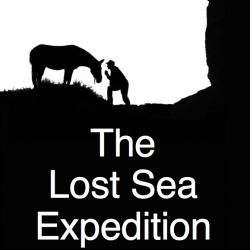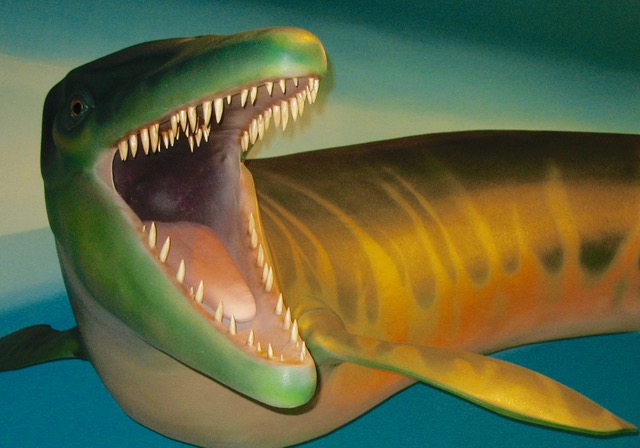
Ever wonder what it’s like to be swallowed by a sea monster? Yeah, that’s the stuff I wondered about as mule Polly and I walked day after week after month across the Great Plains on the Lost Sea Expedition.
Here’s an entry straight from my wagon travel log.
Traveling by mule wagon across the Great Plains, under what used to be a 1000-foot deep sea, it’s hard to imagine what the vanished marine inhabitants looked like. Among the gravel roads and grain bins, it’s just hard to fathom that, millions of years ago, I would have been chum for some giant sea creatures.
To be swallowed by a mosasaur? Wow, that would be something.
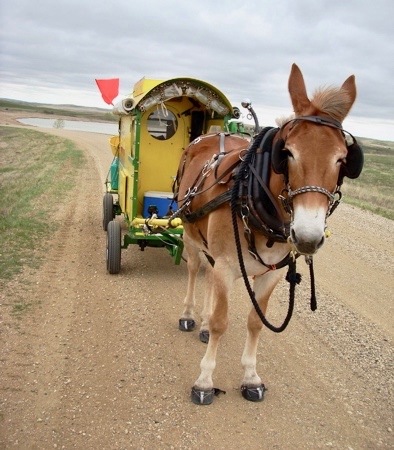
The mosasaur was a marine lizard that swam in the Lost Sea 65 million years ago. Its closest living relatives are snakes, monitor lizards and the Komodo dragon.

One of the things I like most about the mosasaur is how it swallows its prey. Okay, if I was really cutting edge, this is where I’d have you click on an animated short showing you how a mosasaur got its head around a meal. Instead, I’m just a guy walking down a gravel road with a mule so I’ll have to demonstrate the mosasaur swallowing gig with just the things I have on hand.
For illustration purposes, I’m going to use mule Polly. Roll with me.
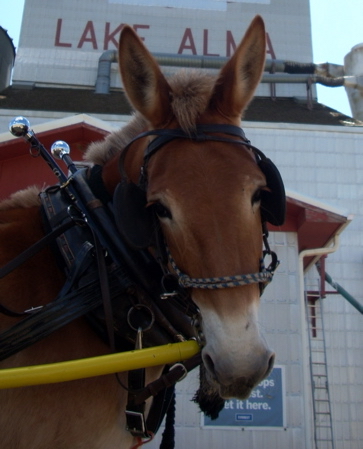
Here’s what Polly’s front teeth, her incisors, look like.
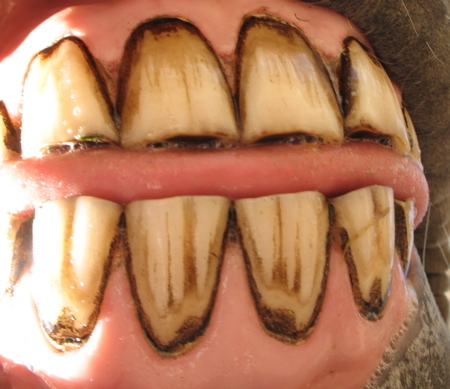
A typical herbivore, she sports 12 incisors in the front of her mouth – 6 upper and 6 lower. These flat teeth are designed for tearing grass and nibbling cookies at book signings.
Okay, now let’s look deeper into Polly’s mouth. For this, I’ll cram my camera in to those teeth for a photo. Here’s what the inside of Polly’s mouth looks like.
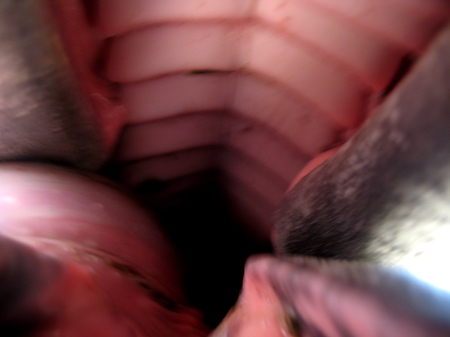
What’s striking is how the roof of Polly’s mouth is corrugated. See those triangular, ridge-shaped rows of tissue in the roof of Polly’s mouth? As Polly chews grass, she presses the bits of food against these ridges with her tongue. They’re sort of like one-way speed bumps, allowing bits of food to pass toward her throat – but not back out.
Pretty cool, eh?
But what does this have to do with a mosasaur’s mouth?
Quite a lot, actually. Like Polly, the mosasaur’s mouth was designed to grab stuff, then work it down its throat. Here’s a photo of a mosasaur fossil’s maw.
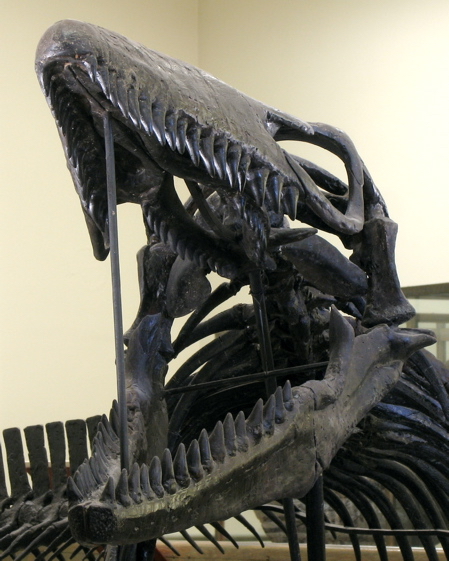
Most notable are the shape of the teeth. Slender and conical, they were designed for grabbing and holding, not shredding, prey.
Okay, so a mosasaur has just clamped down on a 4-foot fish. The fish is thrashing like hell to escape. What next?
That’s where the pterygoids come in.
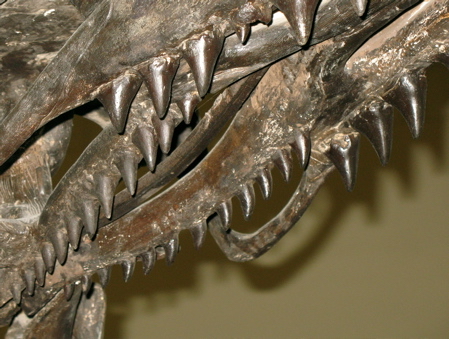
Ptergygoids are special teeth found in the roof of the mosasaur’s mouth, way in the back. Like the ridges in the roof of Polly’s mouth, they help hold food in place in its inevitable journey toward the gullet.
Something the mosasuar had that Polly’s doesn’t is a double-jointed jaw. If you look closely at this next photo, you’ll see a second joint in the jaw. It appears as a fine tan line in the lower jawbone, right behind the last teeth.

This double hinged jaw let the mosasaur open its mouth almost 180 degrees. This allowed it to ratchet over-sized prey down its throat like a modern snake.
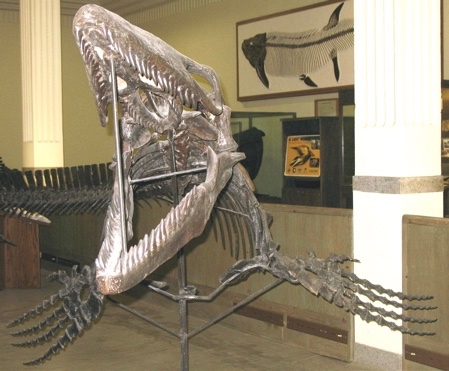
The complete mosasaur package
Pretty neat, eh? Well, as you can see, when all you do all day is walk beside your mule, you can play out all sorts of scenarios. Improvise. Mock up a mule in to a mosasaur. Which, by my reckoning, is way better than some animated Big Media Money special effect of a digital fish going down a digital gullet.
And now it’s time to keep walking up this road.
(Thanks to the South Dakota School of Mines and Technology for letting us photograph their mosasaur. Bernie)

